World Geography And Politics Daily News | 19 Jul 2023

Views (115)
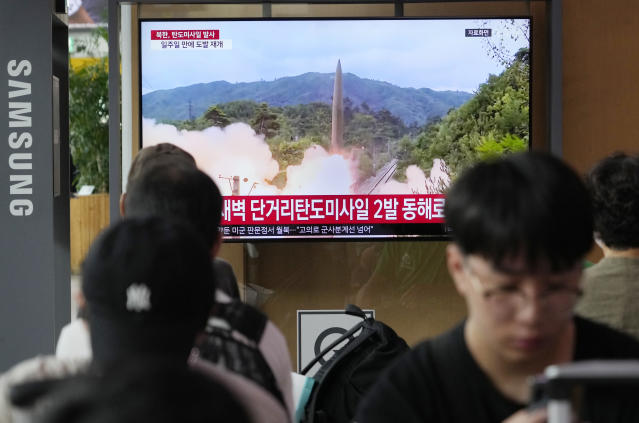
UN says ideas 'floated' on how to get Ukraine, Russia grain to world
UNITED NATIONS (Reuters) -There are a "number of ideas being floated" to help get Ukrainian and Russian grain and fertilizer to global markets after Moscow quit a deal allowing the safe Black Sea export of Ukraine grain, the United Nations said on Tuesday. The Black Sea deal was brokered by the U.N. and Turkey in July last year to combat a global food crisis worsened by Russia's February 2022 invasion of Ukraine. Ukraine and Russia are among the world's top grain exporters.

By Michelle Nichols
UNITED NATIONS (Reuters) -There are a "number of ideas being floated" to help get Ukrainian and Russian grain and fertilizer to global markets after Moscow quit a deal allowing the safe Black Sea export of Ukraine grain, the United Nations said on Tuesday.
The Black Sea deal was brokered by the U.N. and Turkey in July last year to combat a global food crisis worsened by Russia's February 2022 invasion of Ukraine. Ukraine and Russia are among the world's top grain exporters.
Russia's withdrawal on Monday, which included revoking its guarantees for safe navigation, also ended a pact between the United Nations and Moscow in which U.N. officials agreed to help Russian food and fertilizer exports reach world markets.
However, U.N. Secretary-General Antonio Guterres "will continue to explore all possible avenues to ensure that Ukrainian grain, Russian grain, Russian fertilizer are out on the global market," U.N. spokesman Stephane Dujarric said.
"There are a number of ideas being floated," he told reporters, without giving details.
Ukraine's Foreign Minister Dmytro Kuleba said an alternative to the Black Sea grain deal had to be found and "there are very active discussions now."
The European Union said on Tuesday it is seeking to transport more Ukrainian grains via road and rail. While appreciative of EU efforts, Kuleba said Ukrainian exports through Europe would not be able to "compensate for the absence of deliveries from Ukrainian ports on the Black Sea."
Kuleba said the focus on reviving Black Sea shipments was either to continue within the existing framework or create a new model, but added: "The problem, of course, is what is going to happen if Russia decides to attack a vessel carrying grain."
"We have to take risks and we have to demonstrate that we can carry on without Russia," he told reporters on Tuesday during a visit to the United Nations.
Russia struck Ukrainian ports on Tuesday, a day after quitting the Black Sea grain deal. The Kremlin also warned that attempts to ship grain from Ukrainian Black Sea ports without security guarantees from Russia would carry risks because it said Kyiv used those waters for military activities.
'HUNGRY PEOPLE'
A cargo insurance facility providing cover for Ukraine grain shipments traveling under the Black Sea deal has been suspended. The marine cargo and war facility provided cover of up to $50 million per cargo.
Chicago wheat futures finished higher on Tuesday after Ukrainian officials said the Russian air strikes had damaged infrastructure at the port of Odesa.
Moscow has suggested that if demands to improve exports of its own grain and fertilizer were met it would consider resurrecting the Black Sea agreement. It quit because it said those demands had not been met and it complained not enough Ukraine grain was reaching poor countries under the deal.
But the U.N. argued the arrangement has benefited those states by helping lower food prices more than 20% globally. Ukraine has also been a key supplier of grain for the U.N. World Food Programme's efforts to fight hunger.
"This is going to make our ability to feed hungry people that much more difficult," WFP's regional director in East Africa, Michael Dunford, said of Russia's withdrawal, which would "exacerbate what is already a terrible situation."
Russia has said it was prepared to supply poor countries in Africa with grain for free and the Kremlin said on Tuesday that the matter would be discussed at a Russia-Africa summit in St. Petersburg next week.
Ukraine's President Volodymyr Zelenskiy said on Tuesday in his nightly video address that without Ukraine's exports "the deficit on the global market will, unfortunately, be quite tangible."
"And not only for the poorest countries. Different countries will feel it - from Libya and Egypt to Bangladesh and China," he said. "We are working with our partners to prevent this."
(Reporting by Michelle Nichols; additional reporting by Christophe Van Der Perre in Nairobi and Ron Popeski; Editing by Tim Ahmann, William Maclean and Daniel Wallis)
North Korea Tests Missiles as US Nuclear Sub Sails to South
(Bloomberg) -- North Korea launched two missiles into waters off its east coast in a show of anger hours after the US brought a submarine capable of firing nuclear ballistic missiles to a port in South Korea for the first time in about four decades.Most Read from BloombergTesla Investor Rode a 14,800% Gain Thanks to 27-Year-Old AnalystSingapore Passport Is World’s Most Powerful, Replacing JapanMassive US Oil Caverns Sit Empty and Will Take Years to RefillMeet the Billionaire Who Convinced Messi
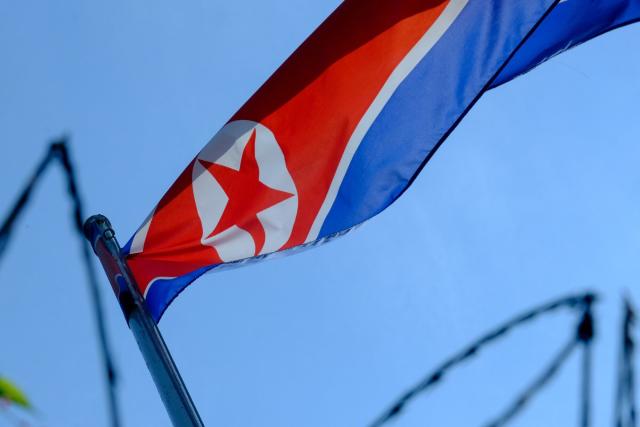
(Bloomberg) -- North Korea launched two missiles into waters off its east coast in a show of anger hours after the US brought a submarine capable of firing nuclear ballistic missiles to a port in South Korea for the first time in about four decades.
Most Read from Bloomberg
North Korea fired two, short-range ballistic missiles early Wednesday from a site near Pyongyang’s international airport at around 3:30 a.m. and 3:46 a.m., South Korea’s Joint Chiefs of Staff said in a statement. The missiles flew about 550 kilometers (340 miles), it said, calling the launches a “grave provocation.”
The missile test escalated tensions on the peninsula after the USS Kentucky, an Ohio-class ballistic missile submarine, arrived in the South Korean port of Busan on Tuesday and North Korea detained a US soldier who intentionally walked across the border from the south side of a joint truce village in the Joint Security Area.
The submarine deployment was timed to coincide with the first meeting of a new US-South Korea body that seeks to deter North Korea from deploying its atomic arsenal.
The Nuclear Consultative Group grew out of a Washington summit in April between President Joe Biden and his South Korean counterpart Yoon Suk Yeol, who has sought to move his country closer to the US, including on defense matters.
The group is intended to provide South Korea with a greater say in how America deploys its nuclear umbrella and provide assurances it would be used to retaliate against a North Korean strike.
“Seoul and Washington will need to find the sweet spot when it comes to the visibility of America’s extended deterrent,” said Duyeon Kim, an adjunct senior fellow in Seoul at the Center for a New American Security.
“Too much visibility of strategic assets could actually undermine the deterrent effect while too little could raise questions in Seoul about commitment,” she said.
No ‘Immediate Threat’
The US Indo-Pacific Command said it was aware of the missile launches by North Korea and was conferring with allies and partners. “While we have assessed that these events do not pose an immediate threat to US personnel or territory, or to our allies, the missile launches highlight the destabilizing impact of the DPRK’s illicit weapons program,” the command said in a statement, referring to North Korea by the abbreviation of its formal name.
North Korea has bristled over the US bringing nuclear assets to the region and demanded a halt to any submarine deployments. It has also denounced the Nuclear Consultative Group as a “nuclear war tool.”
“The US should know that its bolstered extended deterrence system and excessively extended military alliance system, a threatening entity, will only make the DPRK go further away from the negotiating table,” Kim Yo Jong, the powerful sister of the North Korean leader, Kim Jong Un, said in a statement published Monday by state media.
Pyongyang has fired 22 ballistic missiles so far this year, which included four intercontinental ballistic missiles that could hit the US mainland. Kim Jong Un’s regime launched more than 70 ballistic missiles last year, a record for the state.
The North Korean leader has ignored US calls to return to long-stalled nuclear disarmament talks. But he has been busy modernizing his arsenal of missiles and conducting tests of systems to attack South Korea and Japan, which host the bulk of US military personnel in the region.
--With assistance from Max Zimmerman and Sangmi Cha.
(Updates with analyst comment, details on missiles)
Most Read from Bloomberg Businessweek
©2023 Bloomberg L.P.
UN Security Council meets for first time on AI risks
The United Nations Security Council held its first meeting on artificial intelligence on Tuesday where China said the technology should not become a "runaway horse" and the United States warned against its use to censor or repress people. Britain's Foreign Secretary James Cleverly, who chaired the meeting under Britain's July presidency of the body, said AI will "fundamentally alter every aspect of human life." "We urgently need to shape the global governance of transformative technologies because AI knows no borders," he added after saying that AI could help address climate change and boost economies.
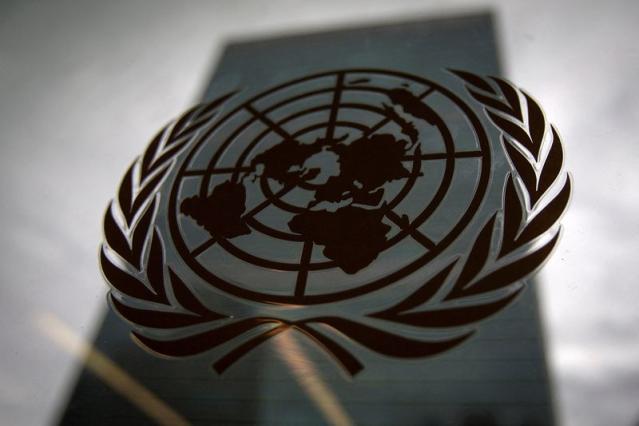
By Michelle Nichols
UNITED NATIONS (Reuters) - The United Nations Security Council held its first meeting on artificial intelligence on Tuesday where China said the technology should not become a "runaway horse" and the United States warned against its use to censor or repress people.
Britain's Foreign Secretary James Cleverly, who chaired the meeting under Britain's July presidency of the body, said AI will "fundamentally alter every aspect of human life."
"We urgently need to shape the global governance of transformative technologies because AI knows no borders," he added after saying that AI could help address climate change and boost economies. But he also warned that the technology fuels disinformation and could aid both state and non-state actors in a quest for weapons.
The 15-member council was briefed by U.N. Secretary-General Antonio Guterres, Jack Clark, co-founder of high-profile AI startup Anthropic, and Professor Zeng Yi, co-director of the China-UK Research Center for AI Ethics and Governance.
"Both military and non-military applications of AI could have very serious consequences for global peace and security," Guterres said.
Guterres backs calls by some states for the creation of a new U.N. body "to support collective efforts to govern this extraordinary technology," modeled on the International Atomic Energy Agency, the International Civil Aviation Organization, or the Intergovernmental Panel on Climate Change.
China's U.N. Ambassador Zhang Jun described AI as a "double-edged sword" and said Beijing supports a central coordinating role of the U.N. on establishing guiding principles for AI.
"Whether it is good or bad, good or evil, depends on how mankind utilizes it, regulates it and how we balance scientific development with security," Zhang said, adding that there should be a focus on people and AI for good to regulate development and to "prevent this technology from becoming a runaway horse."
Deputy U.S. Ambassador to the U.N., Jeffrey DeLaurentis, also said there was a need for countries to also work together on AI and other emerging technologies to address human rights risks that threaten to undermine peace and security.
"No member states should use AI to censor, constrain, repress or disempower people," he told the council.
Russia questioned whether the council, which is charged with maintaining international peace and security, should be discussing AI.
"What is necessary is a professional, scientific, expertise-based discussion that can take several years and this discussion is already underway at specialized platforms," said Russia's Deputy U.N. Ambassador Dmitry Polyanskiy.
(Reporting by Michelle Nichols; Editing by Aurora Ellis)
US soldier believed to be detained by North Korea after ‘willfully’ crossing border
The US Army has identified a soldier who crossed the demarcation line into North Korea as Pvt. Travis King, a cavalry scout who joined the military in January 2021.

King was set to be administratively separated from the US Army after facing disciplinary action for assault, an Army official tells CNN.
King had been on a Joint Security Area (JSA) tour as a civilian when he crossed into North Korea. US Forces Korea spokesperson Col. Isaac Taylor said on Tuesday that a US soldier “willfully and without authorization” crossed the line during a JSA tour.
“We believe he is currently in [Democratic People’s Republic of Korea] custody and are working with our [Korean People’s Army] counterparts to resolve this incident,” Taylor said in a statement.
There was no indication that King was trying to defect, a separate US official said.
King had spent 50 days in a detention facility in South Korea after facing disciplinary action for assault, according to two US officials.
He was held in a designated detention facility under the Status of Forces Agreement with South Korea, the officials said, which is an agreement that defines how US service members, their family members, and other Defense Department personnel are treated and processed in a foreign country, including its justice system.
Following the detention, King was set to be administratively separated from the US Army. One of the officials told CNN that he was being escorted to the airport to return to the US, but because the escorts could not go through customs with him, he was able to leave the airport afterwards.
At the time of his rotation in South Korea, King was assigned to the 6th Squadron, 1st Cavalry Regiment, 1st Brigade Combat Team, 1st Armored Division out of Fort Bliss, Texas, according to Army spokesperson Bryce Dubee.
Currently, King is administratively attached to 1st Battalion, 12th Infantry Regiment, 2nd Brigade Combat Team, 4th Infantry Division, Dubee said.
King has no deployments on his record. His military awards include routine decorations provided to soldiers with his rank and experience — the National Defense Service Medal, the Korean Defense Service Medal, and the Overseas Service Ribbon.
Before King was identified, Defense Secretary Lloyd Austin confirmed that a US soldier had willfully crossed into North Korea, saying he was “absolutely foremost concerned” about the soldier’s welfare.
“We’re closely monitoring and investigating the situation, and working to notify the soldier’s next of kin, and engaging to address this incident,” Austin said at a press conference on Tuesday.
State Department spokesperson Matt Miller said Tuesday that the department had not reached out to the North Koreans or any other governments, including China, and that the department was “in the lead” on the issue.
“We will stay in close coordination with them over the next hours, and if there are steps that would be useful for the State Department to take, we of course will not hesitate to take those,” Miller said.
The prospect of a US soldier being held in North Korean military custody comes at a time of fraught diplomacy and rising military tensions on the Korean Peninsula.
A US official told CNN the soldier appeared to cross the line into voluntarily. US officials say they are waiting to confirm his identity until his next of kin is notified.
The Joint Security Area is the most recognizable part of the wider Demilitarized Zone between South and North Korea, and tours of the area are open to the public and organized by the United Nations Command.
The JSA has been disarmed since 2018 after an inter-Korean military agreement, so both the UNC and North Korean soldiers at the area are unarmed. Neither the UN command soldiers or the North Korean soldiers are allowed to cross the military demarcation line separating North and South.
The broader demilitarized zone (DMZ) is the buffer, 2.5 miles wide and 160 miles long, that separates North and South Korea. It has become one of the most heavily fortified borders in the world, ringed by miles of barbed wire and landmines and patrolled by soldiers from both sides for decades.
But the Joint Security Area is a slightly different beast. While there are a series of checkpoints that must be passed to get to the JSA, crossing the Military Demarcation Line that is the actual border between North and South Korea does not require passing any physical barrier. There is only a small raised line on the ground that marks the border, and stepping across it requires only one step, as former US President Donald Trump did when he met North Korean leader Kim Jong Un in the JSA in 2019.
During a JSA tour, participants are kept about 20 yards or so from the line Trump stepped across. Though there are guards on the South Korean side of the border during the tours, no guards were seen on the North Korean side when CNN took a press tour of the JSA last year.
The DMZ is a monument to the moment history was frozen at the end of the Korean War, which took place from 1950 and 1953.
Under a deal between the belligerents – North Korea and China on one side, the collection of western allies on the other known as the United Nations Command – the Korean peninsula was roughly cut in half and a buffer zone created between the two.
That deal was signed at the village of Panmunjom which became the JSA – the one area along the DMZ where the two sides could meet for negotiations and prisoner swaps.
US soldiers are stationed on the South Korean side of the JSA because they were part of the original United Nations Command.
Over the decades the JSA has seen sporadic bouts of violence between the two sides, including in 1976 when two US soldiers were bludgeoned to death by North Korean counterparts as they tried to trim a tree on the border.
The JSA has also seen a string of successful and unsuccessful defection attempts from both sides over the decades.
Under leader Kim Jong Un, North Korea has been ramping up tests of potentially nuclear capable intercontinental ballistic missiles, something South Korea and its treaty ally the United States are keen to push back on.
The same day the US national crossed the border, another moment of intense historic and strategic symbolism was taking place at the South Korean port of Busan – for the first time since the early 1980s a nuclear capable US submarine was making a port call.
That visit came as Kurt Campbell, coordinator for the Indo-Pacific at the US National Security Council, was at the inaugural meeting in Seoul of the Nuclear Consultative Group (NCG).
The NCG is a joint US and South Korean panel set up by the countries’ leaders at a summit in Washington in April.
During that summit US President Joe Biden and South Korean counterpart Yoon Suk Yeol unveiled a “Washington Declaration” that included a set of measures aimed at making Pyongyang think twice about launching an attack on its southern neighbor.
This story has been updated with additional reporting.
UN Security Council debates risks, benefits of AI: 'Responsibility to future generations'
The United Nations Security Council held its first discussion on AI Tuesday. The meeting was chaired by Britain's foreign secretary. The U.K. is the council president for July.
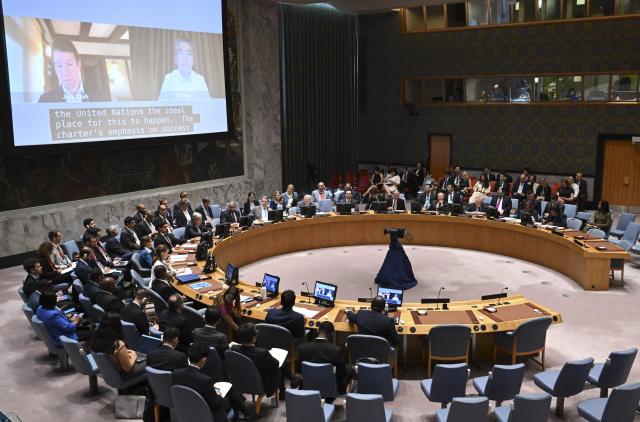
"The malicious use of AI systems for terrorist, criminal or state purposes could cause horrific levels of deaths and destruction, widespread trauma and deep psychological damage on an unimaginable scale," U.N. Secretary-General Antonio Guterres said in his remarks at the meeting. "Generative AI has enormous potential for good and evil at scale."
"Its creators themselves have warned that much bigger, potentially catastrophic and existential risks lie ahead," he added. "Without action to address these risks, we are derelict in our responsibilities to present and future generations."
"We, therefore, welcome this discussion to understand how the Council can find the right balance between maximizing AI’s benefits while mitigating its risks," he stressed, urging collaboration with private industry and activists, as "experiences have taught us success comes from working with a range of actors."
"AI will fundamentally alter every aspect of human life," he said, focusing on the ability to "enhance or disrupt global strategic stability."
"That’s why we urgently need to shape the global governance of transformative technologies," he added. "Because AI knows no borders."
"In that spirit, let us work together to ensure peace and security as we pass across the threshold of an unfamiliar world," he concluded.
Not all countries pursued such a utopian view, with the Chinese government arguing the U.N. rules must reflect the views of developing countries, claiming that some "developed countries" have rushed to control AI.
"Certain developed countries, in order to seek technological hegemony, make efforts to build their exclusive small clubs and maliciously obstruct the technological development of other countries and artificially create technological barriers," Chinese Ambassador Zhang Jun said. "China firmly opposes these behaviors."
Other speakers included representatives from Japan, Mozambique and the United Arab Emirates.
North Korea fires 2 short-range missiles into the sea as US docks nuclear submarine in South Korea
North Korea fired two short-range ballistic missiles into its eastern sea early Wednesday in what appeared to be a statement of defiance as the United States deployed a nuclear-armed submarine to South Korea for the first time in decades. The launches came as the U.S.-led United Nations Command tries to secure the release of a U.S. soldier who fled to North Korea from the South Korean side of a border village Tuesday afternoon.
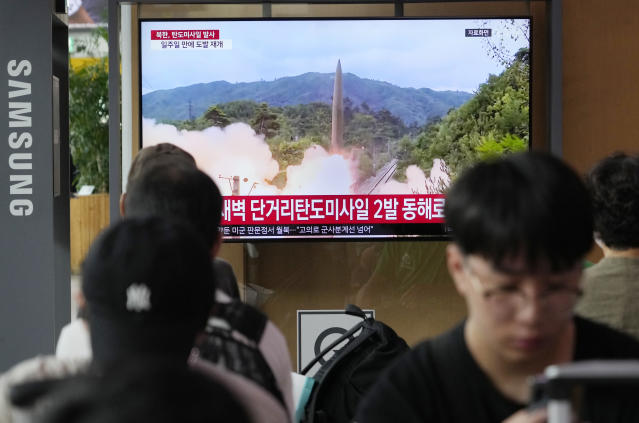
SEOUL, South Korea (AP) — North Korea fired two short-range ballistic missiles into its eastern sea early Wednesday in what appeared to be a statement of defiance as the United States deployed a nuclear-armed submarine to South Korea for the first time in decades.
The launches came as the U.S.-led United Nations Command tries to secure the release of a U.S. soldier who fled to North Korea from the South Korean side of a border village Tuesday afternoon.
Private 2nd Class Travis King, in his early 20s, had just been released from a South Korean prison where he was held on assault charges. Instead of getting on a plane to be taken back to Fort Bliss, Texas, he left and joined a tour of the Korean border village of Panmunjom, where he ran across the border, U.S. officials say.
South Korea’s Joint Chiefs of Staff said that from 3:30 to 3:46 a.m. North Korea fired two short-range ballistic missiles from an area near capital Pyongyang that flew about 550 kilometers (341 miles) before landing in waters east of the Korean Peninsula.
Those flight details were similar to the assessment of the Japanese military, which said the missiles landed outside of Japan’s exclusive economic zone and that there were no immediate reports of damage from ships or aircraft in affected areas.
The flight distance of the North Korean missiles roughly matched the distance between Pyongyang and the South Korean port city of Busan, where the USS Kentucky arrived Tuesday afternoon in the first visit by a U.S. nuclear-armed submarine to South Korea since the 1980s.
Japanese Defense Minister Yasukazu Hamada told reporters that the North Korean missiles traveled on a low trajectory, with their maximum altitude reaching about 50 kilometers (31 miles), and possibly demonstrated “irregular maneuver” in flight.
Japan has previously used similar language to describe the flight characteristics of a North Korean weapon modeled after Russia’s Iskander missile, which travels at low altitudes and is designed to be maneuverable in flight to improve its chances of evading missile defenses.
The South Korean Joint Chiefs of Staff condemned the North Korean launches as “major provocation” that threatens peace and stability in the region and said the South Korean and U.S. militaries were closely monitoring the North for further weapons activities.
Wednesday’s launches marked the North’s first ballistic activity since July 12, when it flight-tested a new solid-fuel intercontinental ballistic missile that demonstrated potential range to reach deep into the U.S. mainland. That launch was supervised by the country’s authoritarian leader Kim Jong Un, who vowed to further bolster his country’s nuclear fighting capabilities in the face of expanding U.S.-South Korean military activities, which he blamed for worsening the security environment on the Korean Peninsula.
Tensions have rose in the region in recent months as the pace of both North Korean weapons tests and U.S.-South Korean joint military drills have increased in a cycle of tit-for-tat.
Since the start of 2022, North Korea has test-fired around 100 missiles while attempting to demonstrate a dual ability to conduct nuclear attacks on both South Korea and the continental United States. The allies in response have stepped up their joint military training and agreed to increase the deployments of U.S. strategic assets like long-range bombers, aircraft carriers and submarines to the region.
Periodic visits by U.S. nuclear ballistic missile-capable submarines to South Korea were one of several agreements reached by U.S. President Joe Biden and South Korean President Yoon Suk Yeol in April in response to North Korea’s expanding nuclear threat. They also agreed to further expand combined military exercises, strengthen joint planning for nuclear contingencies and establish a bilateral Nuclear Consultative Group, which held its inaugural meeting in Seoul Tuesday.
The steps were meant to ease South Korean concerns about North Korea's growing nuclear weapons arsenal and suppress voices within the South calling for the country to pursue its own nuclear weapons program.
U.S. Forces Korea said in a statement that the Kentucky's arrival in Busan reflects the United States' “ironclad” commitment to “extended deterrence,” referring to an assurance to defend its ally with its full military capabilities, including nuclear ones.
The Ohio-class submarine can be equipped with about 20 Trident II ballistic missiles with a range of 12,000 kilometers (7,456 miles), according to South Korea's military.
“From this submarine, the U.S. can launch attacks (on North Korea) from anywhere in the world," said Moon Keun-sik, a submarine expert who teaches at Kyonggi University in South Korea. “But there will likely be backlashes from North Korea and China because it’s like the world’s most covert and threatening nuclear weapons forces being deployed on their doorsteps.”
While some South Korean conservatives have expressed disappointment that the Biden-Yoon meeting in April came short of agreeing to station U.S. nuclear weapons or strategic assets in the South, placing nuclear weapons offshore and on submarines is “actually a stronger deterrent in many ways,” said Duyeon Kim, a senior analyst at Washington’s Center for a New American Security.
“Deterrence is strengthened when the location of American strategic assets is unknown to the adversary as long as the adversary knows that these weapons exist,” said Kim.
Still, Seoul and Washington will need to find the “sweet spot” when it comes to the visibility of America’s extended deterrent.
“Too much visibility of strategic assets could actually undermine the deterrent effect while too little could raise questions in Seoul about commitment," Kim said.
__
AP writers Mari Yamaguchi and video journalist Haruka Nuga contributed from Tokyo.
0 Likes
